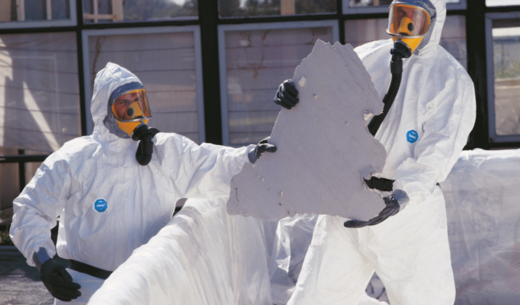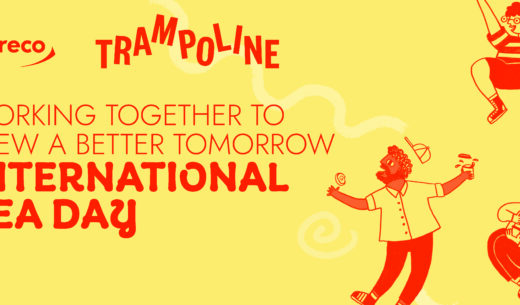Leading teams through a Pandemic
As guidance surrounding the COVID-19 pandemic continues to evolve, one message that remains consistent is that it is essential that employers put the safety, health and well-being of their teams first. Creating a business continuity plan is crucial right now, but above all else, putting people first will be paramount to any business success.
It is becoming increasingly clear that after months of lockdown it’s unlikely that businesses will see all staff returning to regular workspaces in a single step. Social distancing must be maintained, and life will not simply return to normal.
This means that home & remote working will need to continue, and you may have teams spread over various workspaces and even over different shift patterns.
So what does that mean for managers who are potentially now facing the prospect of leading teams split across different workspaces for an extended period of time?
1. Striking the communication balance
When lockdown was first enforced there was little time for planning, and almost no time to discuss a communication process. As a manager it would have been critical to maintain daily communication, especially for those teams who adapted to working from home for the first time.
As we move into a new phase of adaptation, businesses need to now plan for the longer-term impact of COVID-19. Striking a balance between team collaboration and over-communication will require structure. Be careful not to overload teams with constant meetings and catch ups!
Building a planned communication routine can help give employees the structure and space they need to be able to gather their thoughts and use their time productively. You should remember to allow time for projects to be worked on, and for any meeting preparation to occur.
Regular calls or catch ups can help to break up the working week and reduce the sense of isolation but remember to be mindful of your teams workload and how often you’re holding meetings or calls. What may be a ‘quick catch-up’ to you may be someone else’s 4th or 5th meeting if they’re working on other projects. This can be exhausting for anyone and will leave your team feeling frustrated and de-motivated.
As teams do begin to return to work, pay attention to those still working at home. Don’t let a quick passing chat in the office or workshop become a meeting where decisions are made. This will only serve to alienate homeworkers. Failing to encourage collaboration can have a detrimental impact on team morale and productivity. Equally, make sure you don’t start to under communicate with those now in the usual workspace. Be consistent with your communication regardless of the location of your teams.
2. Where well-being leads, productivity will follow

Our teams have all experienced change. From being placed on Furlough, working from home, alterations in shift patterns or new social distancing processes in an existing workplace… few roles will have remained unaffected by the pandemic.
Each change introduces new challenges and new risks in both physical and emotional wellbeing.
As a manager you have a duty of care and providing wellbeing support will be more important than ever before in these unprecedented times. If you have one, now is the time to start discussions with your Human Resources department.
A simple way to address wellbeing immediately is to schedule regular 1-2-1’s with employees. Make sure that time is set aside to focus on how that person is coping and encourage open communication and honesty. Ask ‘How are you?’. It’s a simple question but it’s one that goes along way.
Make sure that as a manager you actively listen to the response and that you are able to support anyone that you may think is having a difficult time. If your employee is struggling to open up, consider asking about their family, pets or what they did at the weekend.
Remember, your team may not feel comfortable in opening up to you. Remain proactive and communicate the wider support network available to them regularly. Don’t wait for problems to arise.
If you are concerned that an employee or colleague is struggling, make sure you know how to signpost them to further support where available. This may be a Mental Health First Aider, an EAP or a self-care package.
It is also inevitable that for those who are asked to return to the workspace there will be concerns around their own health as well as how they can continue to safely protect their families at home. To support, you must outline the process for returning to work, the safety measures that have been put in place and give confidence to that employee that they are going to be protected and looked after.
3. Creating spaces
When lockdown first began, a large proportion of the UK workforce gathered their belongings from their desk and set up base wherever they could in their homes. According to the Office of National Statistics around 70% of the UK population had never worked from home… until now.
This means that many of those now working from home are not fortunate enough to have the space or the equipment they really need. Muddling through was a requirement, but it is not a credible long-term business plan.
It’s vital that your teams get the support they need to develop a semi-permanent home office environment. As a manager, there will always be factors you cannot control; such as distraction from family or pets. But you should work to remove any controllable constraints for the employee where possible.
Businesses may not have the budget to fully kit out every member of staff working from home. Yet there are small improvements you can facilitate, that will make a positive impact on productivity and wellbeing. At the very least an employee should have access to the bare minimum to do their job including a comfortable/safe space and adequate technology. With those essentials established it’s then important to guide an employee on best practice for setting up their workspace including Getting the most from their ergonomic set-up and how to limit home working distractions.
For those returning to the usual workspace, it’s important that they also feel safe and comfortable. The first consideration should be the implementation of social distancing and reconfiguration of workspaces so that there is a 2-metre distance between employees where possible.
4. Build trust in your teams
The immediate impact of social distancing on management styles is obvious… it means physically distancing from your team. You can’t (and shouldn’t) spend every waking minute micro-managing your team, watching their every move and planning their every step.
This means empowering your teams, giving them the tools they need to make the right decisions, and then supporting them through this process.
Managers and leaders are taught throughout their careers to try to avoid micromanaging to get the most out of your teams. However, the switch to the remote working environment can leave managers feeling the need to put in place extra control measures. Whether that’s through extended, repetitive video calls to go over the same project or constantly pestering staff for updates on progress. It’s an easy trap to fall into and one that should be approached with caution.
Whilst it is natural to want to know as much as possible about how your team is performing given the current circumstances, it’s key that you gather this information in a way that shows you trust your team and doesn’t leave them feeling frustrated. One way of avoiding this is to set very clear expectations from the beginning for every task. Let’s demonstrate with examples:

- When delegating a task, be open and clear on key deadlines, as well as what may be involved in the task.
- Set clear expectations and identify the key deliverable
- Confirm that these deliverables are understood, are realistic and are achievable
- Discuss any support that may be required and identify potential roadblocks
- Finally, outline the timeline for when you are going to check in on a task. Whether you plan to check in every morning or every other day, just by letting the person know they will feel less like they’re being pestered and be more prepared to deliver a progress update.
As a remote or socially distanced manager it can also be tempting to feel that every task no matter how big or small needs your stamp of approval. However, if it wasn’t worth your time before the lockdown it’s probably not now, especially as you have even more on your plate.
Trust in your team to be able to make the right decisions on the smaller details so that you can focus on the bigger picture. This not only means that your team feel more empowered, but it also means you are able to avoid getting bogged down in the approval process. Empowering your team now will result in bigger wins for your future.
Moving forward
With the future still unpredictable it’s now more important than ever that managers are there for their teams and for their businesses. Accountability is vital and the businesses that will come out of this pandemic stronger will be those with strong leadership and management from top-to-bottom.
Lyreco are there to support your business as you manage the process of welcoming back employees returning to the workplace as well as helping those employees who remain at home. Find out more about how we can support your business today.










